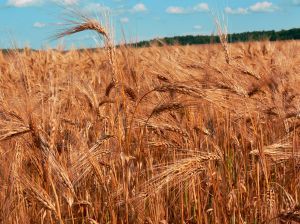Mention America’s “Heartland,” and most of us think of Kansas right away.
The state actually traces its name to the Kansa Indians, known as “people of the wind.” The land was first settled by Europeans in the 1830s. After a tug of war over whether the territory would enter the Union as a free or a slave state, it became a free state in 1861. Residents are known as “Kansans.”
Ever since it was settled, Kansas has been known for the agricultural side of its economy. However, according to 50states.com, many unusual facts associated with it pertain to its industrialized side. Kansas inventors included Almon Stowger (dial telephone, 1889), William Purvis and Charles Wilson (helicopter, 1909) and Omar Knedlik (first frozen carbonated drink machine, 1961).
The city of Hutchinson is often referred to as Salt City. It was constructed above some of the richest salt deposits in the world. The town still mines, processes and ships salt. George Washington Carver, the botanist who discovered at least 300 products made from peanuts, graduated from a Minneapolis high school in 1885. Wichita was the site of the first restaurant in the Pizza Hut chain.
The state has a reputation for unusually hot summers. Residents of Garden City can take advantage of the public swimming pool at the Lee Richardson Zoo, which occupies half a city block and holds an astounding 2.5 million gallons of water.
Think Kansas from your elementary school geography book, and you’ll probably think wheat. In 1997, the state produced a record 492.2 million bushels of the grain. This was enough to make 35.9 billion loaves of bread. A further testament to the importance of wheat in the economy is a 30-foot-tall statue of Johnny Kaw, representing the Kansas wheat farmer, in Manhattan. Sumner County has been dubbed “The Wheat Capital of the World.”
Visitors interested in taking in the natural wonders of the state will want to see Rock City. Some of the 200 rocks are as large as houses, making it the only site in the world with so many huge concretions. The First United Methodist Church in Hutchinson was built during the grasshopper plagues of 1874. As a result, thousands of the bugs were mixed into the mortar of the original church foundation. Signs marking the Oregon trail are visible to travelers, as Kansas was one of six states through which it passed and the only state in which no Indian attacks were reported.
Another popular attraction is Milford Reservoir, with more than 16,000 acres of water. The Geodetic Center of North America is located around 40 miles south of Lebanon at Meade’s Ranch. When a surveyor examines a property line, the position is measured in relation to Meade’s Ranch.
Explorers might want to check out the resources of the Kansas Speleological Society, which has catalogued more than 500 caves in 37 counties. Commanche County boasts at least 128 caves, while Barber County has at least 117. Given the state’s proximity to petroleum states such as Texas and Oklahoma, it’s not surprising to find the Hugoton Gas Field there. The largest natural gas field in the United States, it underlies nearly 8,500 square miles.
Remember reading that the pioneers burned buffalo or cow chips for fuel? Russell Springs, which is located in Logan County, bears the dubious honor of being the Cow Chip Capital of Kansas. The three largest herds of buffalo in the state can be found on public land at the Maxwell Game Preserve in McPherson, Big Basin in Ashland and the Buffalo Game Preserve in Garden City.
Holy Cross Shrine in Pfeifer is known as the 2 Cent Church because of how it was built. Parishioners donated two cents on each bush of wheat they sold. Other state quirks include a law that once made illegal to serve ice cream on cherry piece. And Dodge City has been called the windiest city in the country. A still-growing ball of twine in Cawker City weighs more than 16,750 pounds and measures more than 38 feet in circumference.
Kansas has given us many famous Americans. The first African American to win an Academy Award was Kansan Hattie McDaniel for “Gone with the Wind.” Aviator Amelia Earhart hailed from Atchison, while former President Dwight D. Eisenhower called Abilene home. Comedian Buster Keaton was from Piqua. History also tells us of the exploits of Wyatt Earp, “Wild Bill” Hickok and “Bat” Masterson, lawmen who kept the peace in Kansas frontier towns.
The state also claims entertainers Roscoe Fatty Arbuckle, Dennis Hopper, Harold Lloyd, Vivian Vance and Zasu Pitts. Writers Gwendolyn Brooks, William Inge, Edgar Lee Masters, Damon Runyon and William Allen White lived there, along with journalist John Cameron Swayze and jazz musician Stan Kenton.
Reference:
- 50states.com web site

